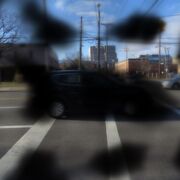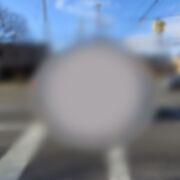Blog: Low Vision Awareness
February is low vision awareness month. What does low vision mean? The World Health Organization defines “low vision” as a visual acuity between 20/70 and 20/400, with the best correction, or a visual field of 20 degrees or less. Typical vision is considered to be 20/20, which means the viewer can see an object clearly from 20 feet away.
We recognize there a lot of ways to describe low vision because everyone’s vision is different. These differences may be caused by a loss of visual acuity or by a loss of visual field. Visual acuity refers to how clear or sharp someone’s vision is. When someone imagines going to the eye doctor, they probably envision the Snellen chart (the chart with the large letter ‘E’ at the top) used to measure visual acuity.
Visual field, the other measure of an individual’s vision, is the area of space someone can see at the same time. This refers to the peripheral vision aspect of vision, how far someone can see without turning their head. A normal visual field is about 160-170 degrees horizontally.
Eye diseases can impact visual acuity and visual fields in different ways. While some individuals have 20/20 vision, many others need prescription glasses or contact lenses. Some have limited central or peripheral vision, while others have blurred, spotty or no vision at all. Examples of a few eye diseases and their impact on an individual’s vision are listed below.

Pictured here to the right is an example of someone’s vision with diabetic retinopathy, with black splotches obstructing the view of the image. The image on left is a 20/20 vision comparison.
Diabetic retinopathy often presents with spotty vision, patches of vision loss and poor vision in low light. Diabetic retinopathy is often caused by damaged blood vessels in the retina from high blood sugar level. Diabetics are most at risk for diabetic retinopathy.


On the left we have an example of 20/20 vision, in the middle an example of early glaucoma, and on the right an advanced glaucoma example. The difference between early and advanced glaucoma is obvious due to the increased tunnel vision. If detected early, glaucoma can be treated to prevent losing more vision. This is an important reason to visit an eye doctor regularly!
Glaucoma can be caused by poor blood flow to the optic nerve, related to pressure in the eye.

Here we have an example of severe macular degeneration. The center vision is obstructed, and the viewer only has their peripheral vision.
Macular degeneration can be caused by problems related to age, smoking and sun exposure.

Here is an example of 20/20 vision, and then again with cataracts. The cataracts point of view is blurry and slightly discolored.
Cataracts cause blurry and cloudy vision and sensitivity to bright lights. Cataracts are caused when the lens becomes cloudy due to age, smoking and sun exposure.
When corrective lenses are not enough to help you see clearly, Cleveland Sight Center is here to provide a variety of tools and trainings to help you adjust to your vision diagnosis.







